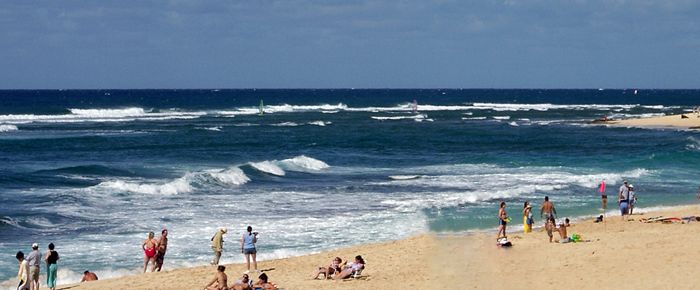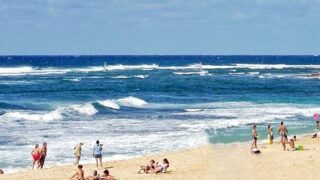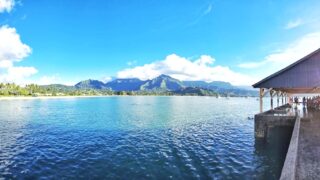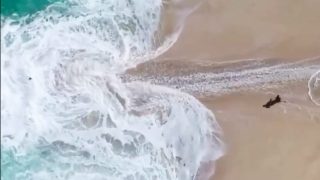Rip currents cause most Hawaii beach rescues and result in over 100 deaths each year in the US. This week rip currents (the correct name) were brought to our attention by the near drowning of Academy Award winning actress Anne Hathaway. She was vacationing on Kauai earlier in the week but had island hopped to Oahu where the incident occurred on Wednesday. Luckily, a nearby surfer heard her calls for help and came to her rescue. A similar fate happened years ago on Kauai with Frank Sinatra.
What are rip currents?
Rip currents are flows of water that prevent returning to shore. These can vary from very narrow to 50 yards wide or more. They can be located anywhere from just beyond the breaking waves to a significant distance off shore. Rips carry you away from the shore via a channel of out outgoing water. They do not pull you under water.
Learn the dangers of rip currents; how to recognize and deal with them. Know that they are more frequent and dangerous during rough surf conditions and formed at breaks in sandbars.
Having witnessed a Hawaii rip current drowning at Hanakapiai Beach, we can attest to their real dangers and have these basic suggestions:
- First and foremost, it is always safest to swim in areas which are lifeguard protected.
- Watch for indications of rip current including churning, multi-directional and choppy water or a broken area in the incoming waves.
- Recognize when you are in a rip and stay calm. Call or wave for help.
- Never attempt to swim back to shore directly against a rip tide. Even an Olympic swimmer would have problems. It can result in fatigue and drowning.
- Conserve energy by not fighting the current then swim parallel to the shore until you are outside of the rip current. It can be some distance before you can safely swim back.
- Never swim alone.
- Use caution in Hawaii waters and if in doubt, stay out!
Get Breaking Hawaii Travel News






